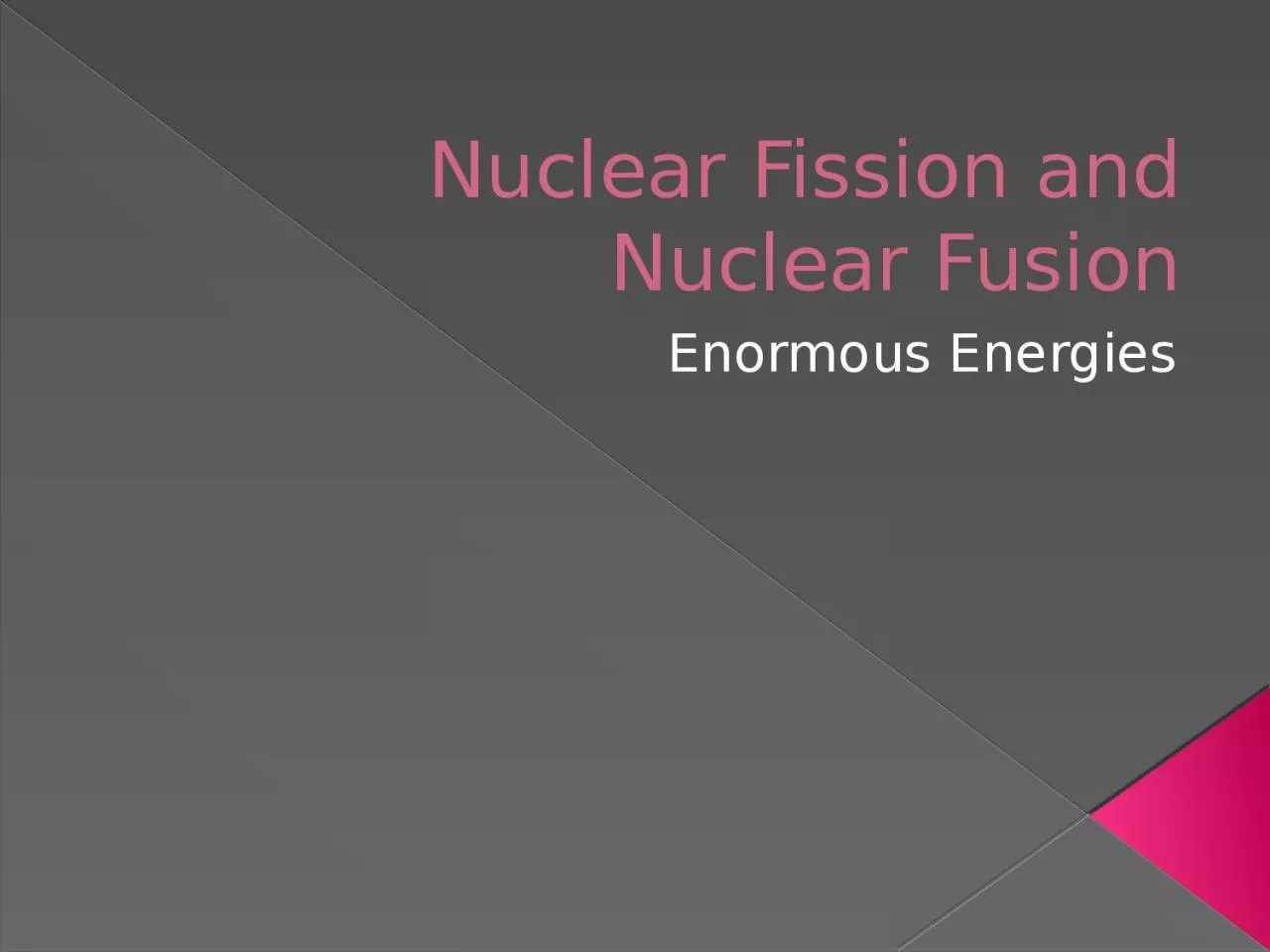

Enormous Energies Nuclear Fission Take a large atom and impact the nucleus with a particle Split the atom releasing high energy more high energy neutrons and two daughter nuclides Fission occurs only rarely in nature Alpha decay is much more common ID: 1022378
Download Presentation The PPT/PDF document "Nuclear Fission and Nuclear Fusion" is the property of its rightful owner. Permission is granted to download and print the materials on this web site for personal, non-commercial use only, and to display it on your personal computer provided you do not modify the materials and that you retain all copyright notices contained in the materials. By downloading content from our website, you accept the terms of this agreement.
1. Nuclear Fission and Nuclear FusionEnormous Energies
2. Nuclear FissionTake a large atom and impact the nucleus with a particle. Split the atom releasing high energy, more high energy neutrons, and two daughter nuclides.Fission occurs only rarely in nature. Alpha decay is much more common.
3. Uranium-235Elements with an atomic number greater than 80 are capable of undergoing fission.23592U absorbs a neutron, 10n, temporarily producing unstable 23692U.Almost immediately 23692U splits into two more stable daughter nuclides plus large amounts of energy and two to three fast neutrons depending on the reaction.
4. Fission and energyThe fast neutrons produced by fission fly off to impact other atoms of 23592U resulting in a chain reaction.The fission of uranium-235 releases ~200MeV. That equals ~100x energy release by burning a coal molecule.
5. ConceptsFissile: atoms (235U or 239Pu)that are capable of undergoing fission when an atom captures a thermal slower neutron.Fissionable: atoms (238U)able to undergo fission when bombarded with high energy neutrons such as in a thermonuclear weapon, bomb.Nuclear fuels: elements that can sustain a fission chain reaction such as uranium-235 and plutonium-239.Spontaneous fission: the slowly occurring process of fission in nuclear fuels unaltered by human intervention.Critical mass: enough nuclear fuel present and emitting neutrons in quantities to sustain a chain reaction.
6. Chain ReactionOnce the fission reaction is initiated, the high energy neutrons released keep the reaction going. This is a chain reaction.The mousetrap model.http://www.youtube.com/watch?v=0v8i4v1mieU Student project 2:54 minuteshttp://www.youtube.com/watch?v=vjqIJW_Qr3c NatSciDemo 2:28 minutes
7. Power ProductionA coal fired plant and a nuclear plant share the same power generation type: conversion of heat to electricity via pressurized steam.The fission reaction releases energy which is absorbed by water converting some of the water to steam.Steam is used to drive the turbine connected to a generator.
8. Schematic of Nuclear Plant
9. The Bombhttp://www.youtube.com/watch?v=CGRx2cPjUXM Navy Film of Bikini Crossroads TestA bomb typically uses a contained explosion or impact to induce a chain reaction. No controls limit the progress of the reaction.
10. FusionFusion reactions are the combining of two nuclei to form a more massive nucleus.Many fusion reactions release large amounts of energy. An example is the combining of two isotopes of hydrogen (tritium and deuterium) to form helium and a neutron plus a large amount of kinetic energy in the reaction products:3H + 2H 4He + n + 17.6 MeV
11. http://www.youtube.com/watch?feature=endscreen&v=yTkojROg-t8&NR=1&safety_mode=true&persist_safety_mode=1&safe=active Best of Science, Fission and Fusion 8:38 minutes
12.
13. Resourceshttp://www.lbl.gov/abc/wallchart/teachersguide/contents.html DOE Teacher’s Guide